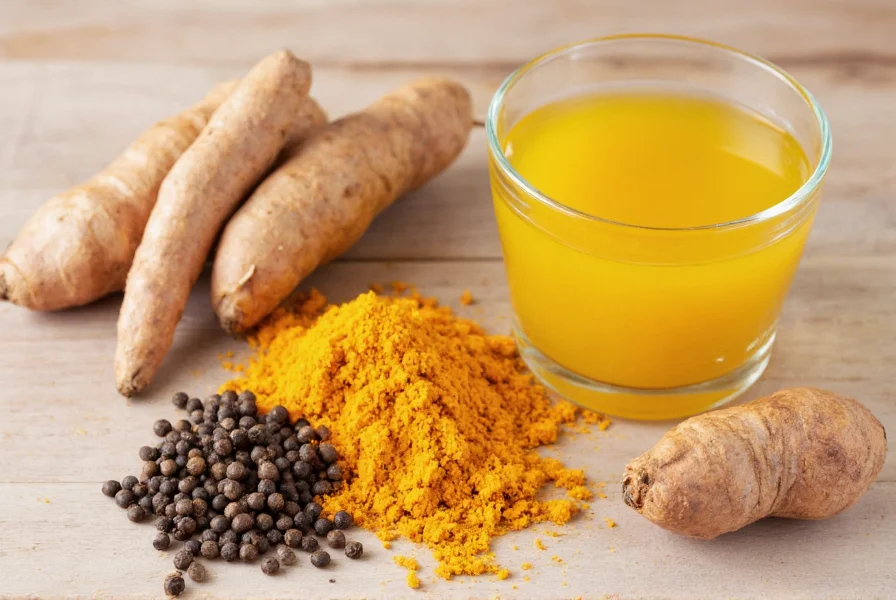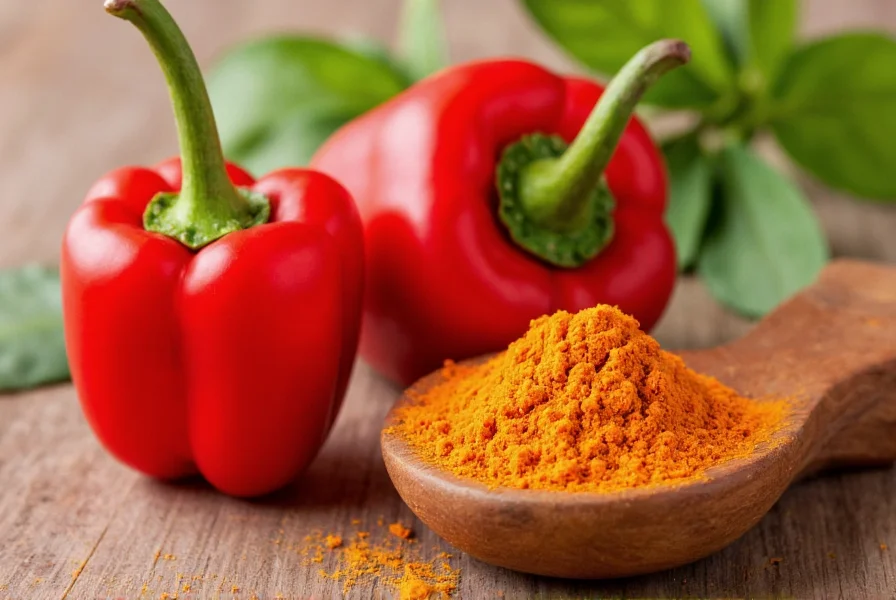For decades, traditional medicine systems have combined turmeric with black pepper, but modern science has only recently validated this ancient wisdom. The key lies in piperine, the bioactive compound in black pepper, which interacts with turmeric's curcumin to create a powerful health synergy that neither spice achieves alone.
The Bioavailability Breakthrough
Curcumin, turmeric's primary active component, has notoriously poor bioavailability when consumed alone. Research shows that only a small fraction of ingested curcumin enters the bloodstream, with most being rapidly metabolized and eliminated. This limitation significantly reduces turmeric's potential health benefits.
A landmark 1998 study published in Planta Medica demonstrated that adding just 20mg of piperine to 2g of curcumin increased curcumin bioavailability by 2,000%. The mechanism involves piperine inhibiting certain liver and intestinal enzymes responsible for breaking down curcumin before it can be absorbed.
Health Benefits of the Dynamic Duo
The combination of black pepper and turmeric creates several notable health advantages:
| Benefit Category | Scientific Evidence | Practical Impact |
|---|---|---|
| Anti-inflammatory effects | Multiple studies show enhanced reduction in inflammatory markers | Greater relief for arthritis and joint pain |
| Antioxidant capacity | Increased protection against oxidative stress | Better cellular protection and aging support |
| Brain health | Improved blood-brain barrier penetration of curcumin | Potential cognitive function and memory support |
| Metabolic health | Enhanced effects on blood sugar regulation | Support for healthy metabolic function |
Optimal Consumption Strategies
To maximize the benefits of this powerful combination, consider these evidence-based approaches:
Culinary Applications
Adding freshly ground black pepper to turmeric-containing dishes provides the most natural consumption method. Traditional Indian recipes often include both spices together for this very reason. When preparing golden milk, curries, or roasted vegetable dishes, add approximately ¼ teaspoon of black pepper for every teaspoon of turmeric to optimize absorption without overwhelming the flavor profile.
Supplement Considerations
Many high-quality turmeric supplements now include piperine (often labeled as BioPerine®) specifically to enhance bioavailability. When selecting supplements, look for products containing:
- Standardized curcumin extract (typically 95% curcuminoids)
- Measured piperine content (usually 5-10mg per serving)
- Certifications from third-party testing organizations

Important Considerations and Limitations
While the black pepper and turmeric combination offers significant benefits, several factors warrant attention:
Quality Matters
Not all turmeric and black pepper products deliver equal benefits. Turmeric's curcumin content varies significantly based on growing conditions and processing methods. Similarly, piperine concentration in black pepper depends on freshness and storage conditions. Whole peppercorns retain piperine better than pre-ground pepper, which loses potency over time.
Individual Responses Vary
Research indicates that individual responses to curcumin supplementation can vary based on genetics, gut microbiome composition, and overall health status. Some people may experience more pronounced benefits than others from the same dosage.
Potential Interactions
Due to piperine's effect on drug metabolism, individuals taking certain medications should consult healthcare providers before significantly increasing black pepper consumption. Piperine can affect how the body processes some pharmaceutical compounds, potentially altering their effectiveness.
Practical Implementation Guide
Integrating this powerful spice combination into daily life requires minimal effort but delivers maximum benefit when done correctly:
- Morning routine: Add ½ teaspoon turmeric and a pinch of black pepper to warm water with lemon
- Cooking tip: Always include freshly ground pepper when using turmeric in recipes
- Golden milk: Use whole milk or coconut milk (fat helps absorption) with 1 tsp turmeric and ⅛ tsp black pepper
- Supplement timing: Take turmeric supplements with meals containing healthy fats
The synergy between black pepper and turmeric represents one of nature's most scientifically validated health combinations. By understanding and applying this knowledge, you can significantly enhance the effectiveness of turmeric supplementation and culinary use, making every serving substantially more beneficial.
Frequently Asked Questions
How much black pepper should I take with turmeric for optimal absorption?
Research suggests that as little as 1/20th of a teaspoon (approximately 5-10mg) of black pepper significantly enhances curcumin absorption. In practical terms, adding just a pinch (about 1/8 to 1/4 teaspoon) of freshly ground black pepper to each teaspoon of turmeric provides optimal bioavailability enhancement without overpowering the flavor.
Can I use white pepper instead of black pepper with turmeric?
White pepper contains significantly less piperine than black pepper, making it less effective for enhancing curcumin absorption. Black pepper (Piper nigrum) in its whole, freshly ground form provides the highest concentration of piperine, the compound responsible for the bioavailability boost. For maximum benefit, black pepper is preferred over white pepper when combining with turmeric.
Does the combination of pepper and turmeric help with inflammation?
Yes, multiple studies indicate that the combination is significantly more effective for reducing inflammation than turmeric alone. The enhanced bioavailability from piperine allows more curcumin to reach target tissues, where it can inhibit multiple inflammatory pathways. Research shows this combination may be particularly beneficial for conditions like osteoarthritis and other inflammatory joint conditions.
How long does it take to notice benefits from taking turmeric with black pepper?
Most research suggests noticeable effects may take 4-8 weeks of consistent daily consumption. Some people report reduced joint discomfort within 2-3 weeks, while more systemic benefits like improved antioxidant status may take longer. Consistency is key, as curcumin builds up in the system over time. Taking it with healthy fats and black pepper enhances absorption and may shorten the time to noticeable effects.
Can I take too much black pepper with turmeric?
While moderate black pepper consumption is generally safe, excessive amounts (more than 1-2 teaspoons daily) may cause gastrointestinal discomfort in some individuals. The piperine in black pepper can also interact with certain medications by affecting how they're metabolized. For most people, the small amounts needed to enhance turmeric absorption (just a pinch per serving) present no safety concerns, but those with sensitive digestive systems or on medications should consult healthcare providers.











 浙公网安备
33010002000092号
浙公网安备
33010002000092号 浙B2-20120091-4
浙B2-20120091-4